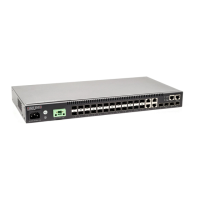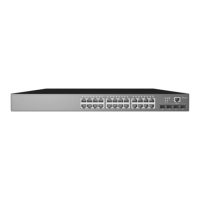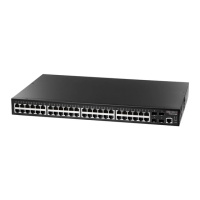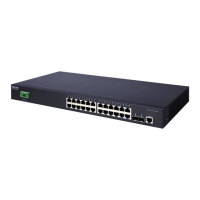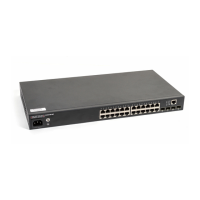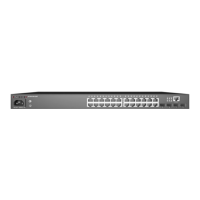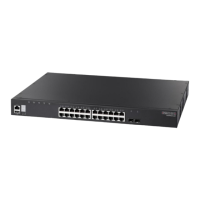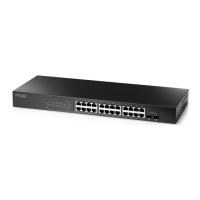Chapter 11
| Interface Commands
Transceiver Threshold Configuration
– 414 –
Example
The following example sets alarm thresholds for the transceiver temperature at
port 25.
Console(config)interface ethernet 1/25
Console(config-if)#transceiver-threshold temperature low-alarm 97
Console(config-if)#transceiver-threshold temperature high-alarm -83
Console#
transceiver-threshold
tx-power
This command sets thresholds for the transceiver power level of the transmitted
signal which can be used to trigger an alarm or warning message.
Syntax
transceiver-threshold tx-power {high-alarm | high-warning | low-alarm |
low-warning} threshold-value
high-alarm – Sets the high power threshold for an alarm message.
high-warning – Sets the high power threshold for a warning message.
low-alarm – Sets the low power threshold for an alarm message.
low-warning – Sets the low power threshold for a warning message.
threshold-value – The power threshold of the transmitted signal.
(Range: -4000 - 820 in units of 0.01 dBm)
Default Setting
High Alarm: -9.00 dBm
HIgh Warning: -9.50 dBm
Low Warning: -12.00 dBm
Low Alarm: -11.50 dBm
Command Mode
Interface Configuration (ECS4120-28F SFP+ Ports 25-28
16
,
Other models: SFP/SFP+ Ports)
Command Usage
◆ The threshold value is the power ratio in decibels (dB) of the measured power
referenced to one milliwatt (mW).
◆ Refer to the Command Usage section under the transceiver-threshold current
command for more information on configuring transceiver thresholds.
◆ Trap messages enabled by the transceiver-monitor command are sent to any
management station configured by the snmp-server host command.
16. Due to a chip limitation, transceiver data cannot be configured on ports 1-20 on the
ECS4120-28F. Default settings are used for these ports.

